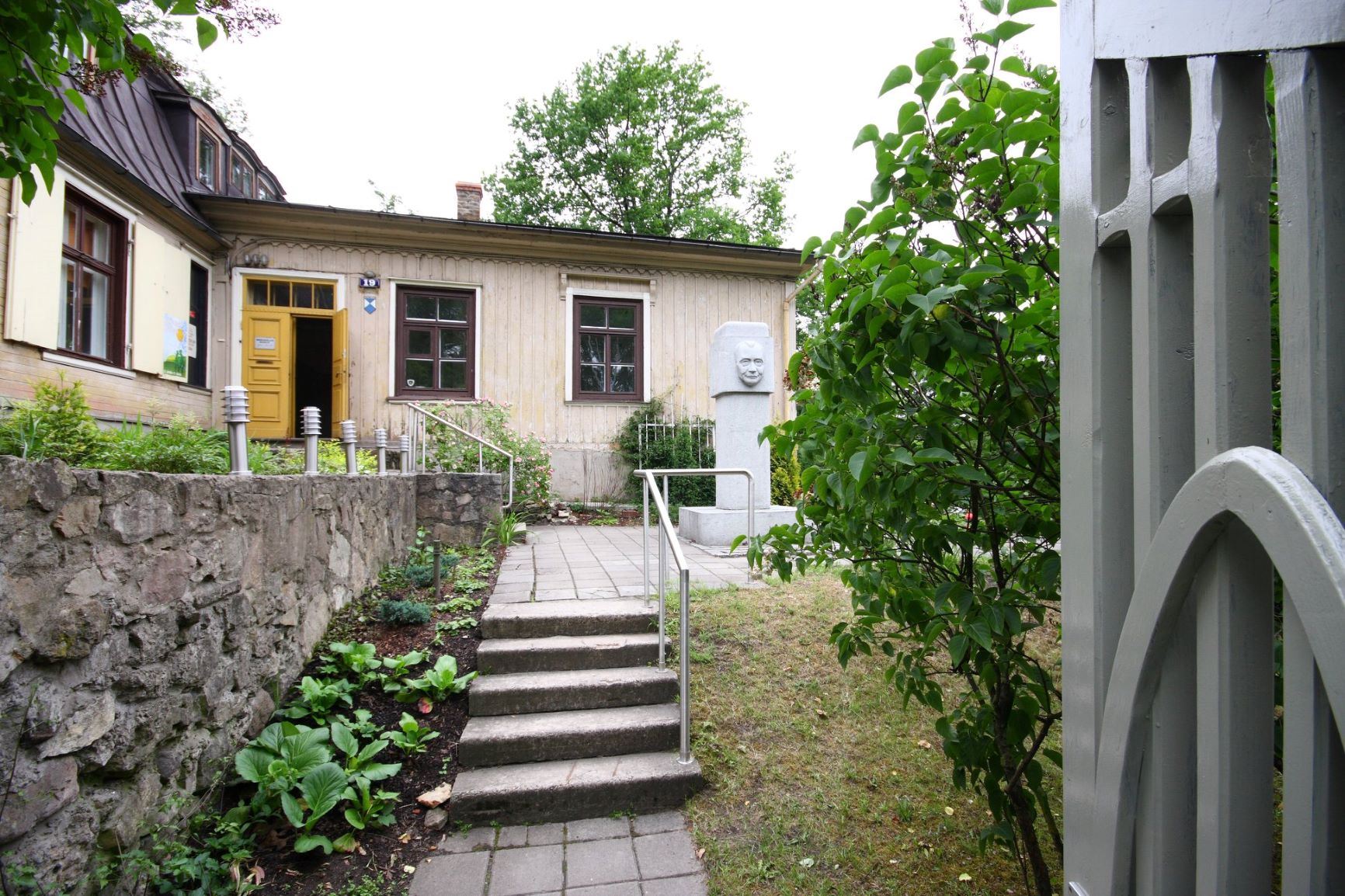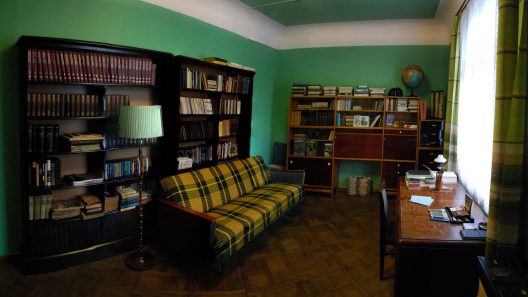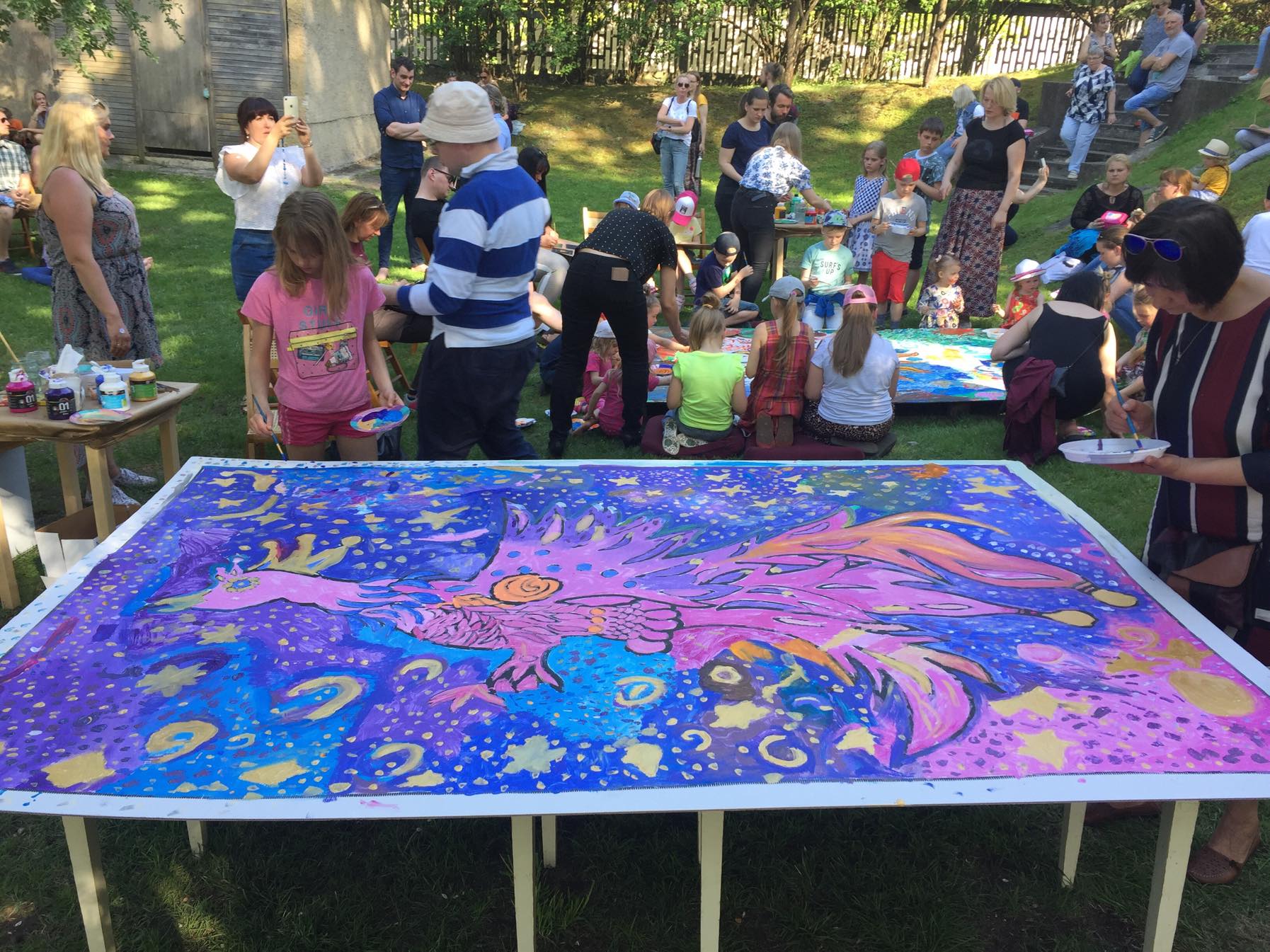This house offers information about Ojārs Vācietis, his contemporaries and the environment in which the poet lived and did work that awakened the conscience of Latvians during the latter half of the 20th century. The building is more than 200 years old and originally housed a saloon. It was visited by one of the most brilliant representatives of the Enlightenment, Garlieb Merkel, as well as the composer Richard Wagner. German artist and historian Johann Christoph Brotze drew sketches of the saloon. Ojārs Vācietis and his family moved into one of the flats of the building in 1960.
This is a place that played a special role in the life and creativity of Ojārs Vācietis, and this is where he wrote most of his important poems. His wife, poet and translator Ludmila Azarova, has said that Pārdaugava was an intellectual space for her husband. He had a large desk, and his poems first involved strolls around the neighbourhood ˗ the Arkādijas Garden Park, Lake Māra, and the road to the Āgenskalns market and the Torņakalns train station. The poet’s garden, workroom and living room, recordings of his voice, videos, a digital exhibition and a series of his personal objects ˗ a beret, sunglasses, a globe, boxing gloves, pencils, manuscripts and drawings, all of which help to understand the world that he created. The museum speaks to Ojārs Vācietis and his contemporaries. Visitors can examine audiovisual documents about the poet, and the museum offers literary, historical and artistic exhibitions, literary events and a wide range of educational and cultural programmes.








